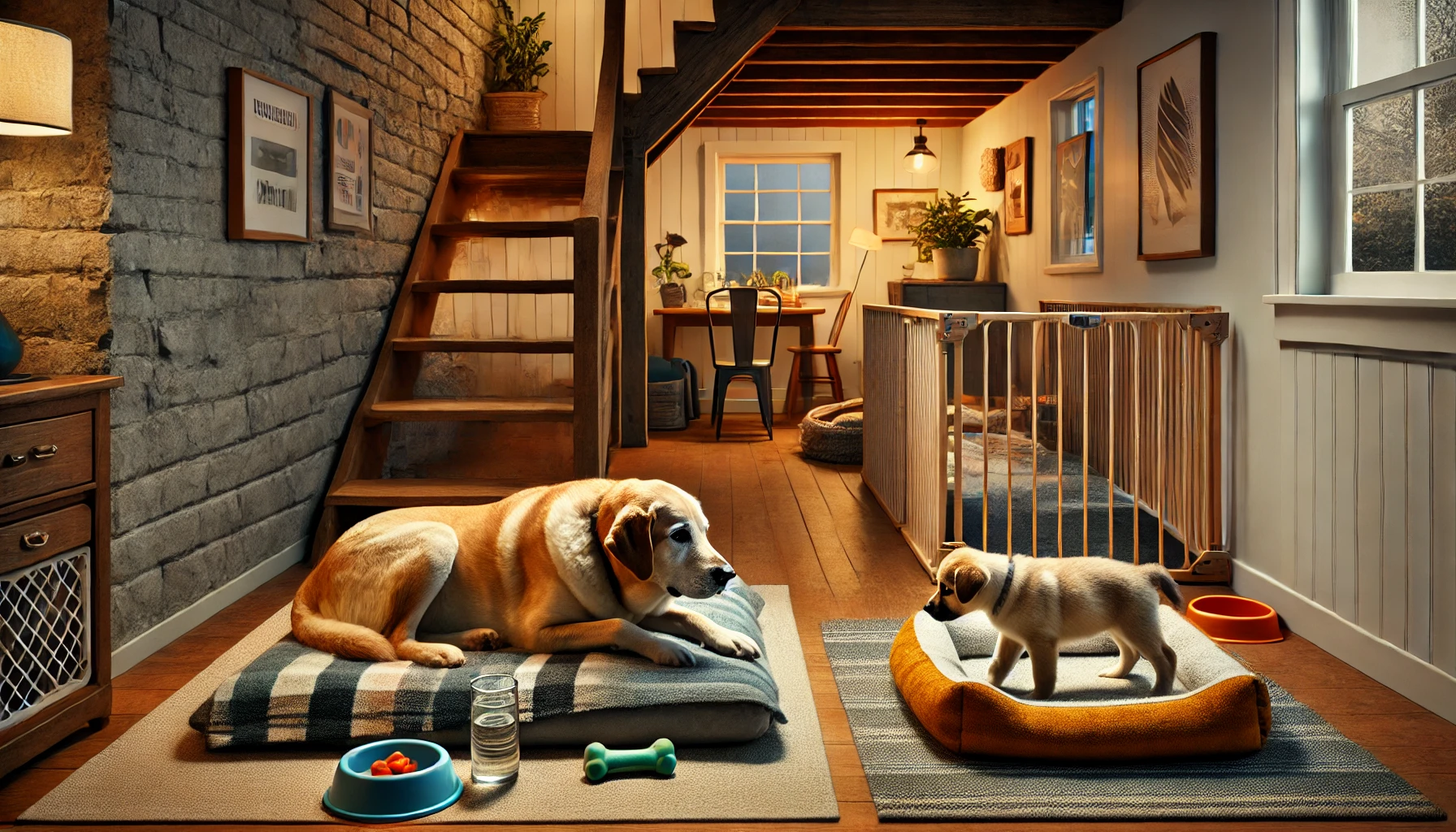Bringing a new dog home is exciting — but it also comes with the responsibility of making your space safe, comfortable, and welcoming for your new companion. Whether you’re adopting a puppy or an adult dog, preparing your home properly can ease the transition and prevent stress or accidents during the first days.
Why preparation is important
Dogs are naturally curious and sensitive to new environments. Without the right setup, they may feel insecure, confused, or even put themselves at risk. A well-prepared home helps your dog:
- Feel safe and settled
- Understand where to eat, sleep, and play
- Avoid dangerous or off-limits areas
- Start building healthy habits from day one
Choose a dedicated space for your dog
Before your new dog arrives, define a specific area of your home where they’ll sleep and relax. This space should be quiet, free of heavy foot traffic, and ideally near family activity — but not too noisy.
Equip the space with:
- A soft bed or blanket
- Fresh water and a clean bowl
- Chew-safe toys
- A baby gate if needed for boundaries
This helps your dog feel they have a “safe zone” that belongs to them.
Remove hazards and block access
Puppies and even adult dogs may chew, explore, or knock things over out of curiosity. Be proactive by:
- Hiding electrical cords or using cord covers
- Removing toxic plants and cleaning products from low areas
- Blocking off stairs, kitchens, or balconies
- Storing shoes, clothing, and trash bins out of reach
Think of it like baby-proofing your home — but for dogs.
Prepare the food and water stations
Have a clean, stable area for your dog’s meals and fresh water. Use bowls that are appropriate for their size. Avoid placing them near busy areas or entrances where your dog may be distracted or nervous while eating.
Set up a potty plan
If your dog is not house-trained yet, you’ll need a strategy. For puppies or indoor dogs:
- Use training pads in a quiet corner
- Clean up accidents promptly and without punishment
- Reward correct behavior with treats and praise
- Keep consistency in location and routine
If you have outdoor space, start training from day one with regular potty breaks.
Introduce the home gradually
Don’t overwhelm your dog with full access to the house right away. Start with one or two rooms and expand slowly as they adapt. This helps them feel secure and reduces the risk of accidents or overstimulation.
Keep routines calm and consistent
For the first few days, keep visitors to a minimum and avoid sudden changes. Dogs need time to settle and build trust. Stick to consistent feeding, walking, and playtime schedules.
Supervise interactions with other pets
If you already have other animals at home:
- Introduce them slowly and in neutral territory, if possible
- Monitor body language for signs of stress
- Never leave them alone together at first
- Allow time and space for natural boundaries
Each pet needs time to adjust to the new dynamic.
Give your dog time to explore
Let your dog sniff, observe, and explore at their own pace. Avoid loud noises or rushing them into activities. Offer toys, gentle play, and calm affection.
A well-prepared home builds confidence
By thoughtfully preparing your home, you reduce stress and create a welcoming environment where your new dog can thrive. It’s not just about safety — it’s about showing love and setting the stage for a great life together.

